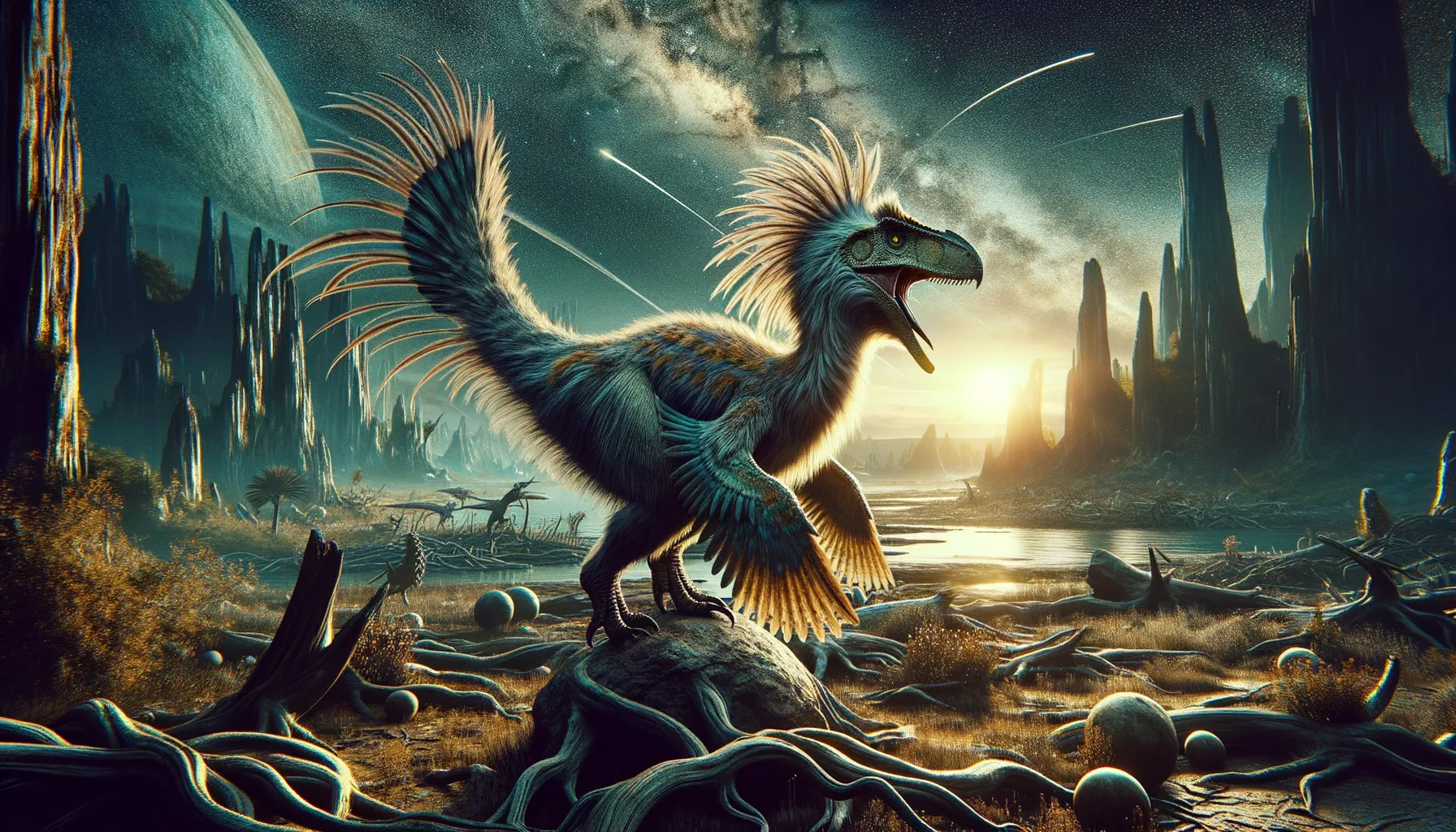
Sinocalliopteryx
Feathered Predator of the Cretaceous
Period
Cretaceous
Length
About 2 to 2.4 meters long.
Height
Roughly 0.9 to 1 meter tall at the hips.
Weight
Approximately 20 to 40 kilograms.
Sinocalliopteryx was a feathered dinosaur known for its predatory skills. Living during the Cretaceous period in what is now China, it had a bird-like appearance with an agile build. Its fossils were found with remains of small prey, indicating its carnivorous diet. Although not a large predator, Sinocalliopteryx played a significant role in its ecosystem, showcasing early evolutionary adaptations that hint at the connection between dinosaurs and birds.
Diet
Sinocalliopteryx was carnivorous, feeding on smaller animals. Its diet likely included other small dinosaurs, birds, and possibly reptiles or mammals. Fossils found with remains of prey in its stomach indicate its active predatory behavior.
Hunting
Sinocalliopteryx was an agile hunter, likely stalking its prey with stealth. It possibly relied on surprise and speed to capture smaller animals. Evidence suggests it had the ability to hunt frequently due to the discovery of multiple prey remains in its fossils.
Environmental challenges
During the Cretaceous period, Sinocalliopteryx faced challenges such as fluctuating climates and active volcanic regions. These environmental factors could have affected its prey availability and habitat stability. Additionally, competition from other predators required continual adaptation and ecological balance.
Speed
Moderate, capable of agile movements.
Lifespan
Estimated around 10 to 15 years.
First discovery
Discovered in Liaoning, China, in 2007.
Fun Facts
- Sinocalliopteryx was a theropod dinosaur that lived during the Early Cretaceous period, around 125 million years ago.
- This dinosaur was discovered in China, and its name means 'Chinese beautiful feather'.
- Sinocalliopteryx was about the size of a large dog, reaching up to 2.5 meters (8 feet) in length.
- Fossils show that it had simple, hair-like feathers, which might have been used for insulation or display rather than flight.
- A fascinating fact about Sinocalliopteryx is that scientists found remains of small dinosaurs and birds inside its stomach, indicating it was a predator.
- It walked on two legs and had a long tail, which likely helped it balance as it moved.
- Sinocalliopteryx is a great example of how diverse and complex the dinosaur family tree is, showcasing the variety of sizes and lifestyles.
Growth and Development
Young Sinocalliopteryx likely grew rapidly to avoid predation from larger species. Feathers might have played a role in temperature regulation and signaling during development. Their growth patterns suggest an evolutionary pathway towards the more modern bird-like structures.
Habitat
Sinocalliopteryx inhabited forests and semi-open areas within present-day China. These environments provided ample cover for hunting. The region was teeming with a diverse array of flora and fauna, offering plenty of food options and nesting sites.
Interaction with other species
Sinocalliopteryx coexisted with numerous species, including other dinosaurs and early birds. Its role as a mid-level predator placed it both as a hunter and potential prey. Interactions with similar-sized predators would likely have led to competition for resources.
Natural lifespan
Sinocalliopteryx's natural lifespan was around a decade.
Reproduction
Sinocalliopteryx probably reproduced by laying eggs, similar to birds. Nesting behavior might have involved selecting safe, concealed locations. The presence of feathers could indicate a brooding behavior, keeping their eggs warm and protected.
Social behaviour
They might have shown solitary tendencies, focusing mainly on individual hunting. However, opportunities for cooperation during hunts couldn't be entirely ruled out. Social interactions would primarily occur during mating seasons or territorial disputes.
Fossil locations
Fossils of Sinocalliopteryx have been predominantly found in the Yixian Formation in Liaoning Province, China. This site is renowned for a wealth of well-preserved feathered dinosaurs. The conditions within this area provided a unique snapshot of ancient life during the Early Cretaceous period.
